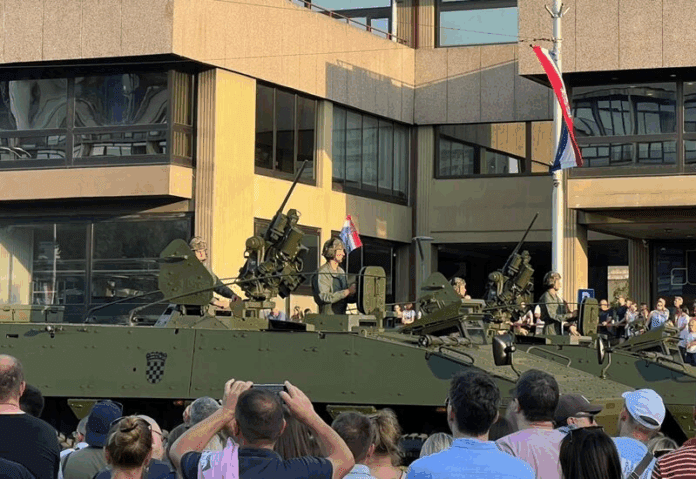Operation Storm, launched in August 1995, stands as one of Croatia’s most significant military victories. Marking the end of the Homeland War, it led to the liberation of occupied territories and the fall of the Serbian parastate. This article explores the strategic brilliance, international reaction, and lasting impact of Operation Storm—an event that reshaped Croatia’s future and secured its sovereignty.
A remarkable feat in August 1995
What the Croats achieved at the beginning of August 1995 was an incredible feat. It was the victorious end to the Homeland War, with Croatian defender units welcomed back from that historic victory with tears of joy.
For much of the international community, it came as a surprise. Especially for those who had warned Croatia that if it undertook military action, it would be defeated because it was weaker than the Greater Serbian forces. Threats were made that Croatia would never reclaim Vukovar because of it.

International pressure and miscalculations
It was recently revealed that some leading diplomats from Western powers had, just days before Operation Storm, written in official documents that a “Greater Serbia” should be recognised and that this was a reality. Others exerted pressure on the Croatian leadership to accept the Z-4 peace plan, which essentially offered the rebel Serbs a state within a state.
At that time, the Serbs held two-thirds of Bosnia and Herzegovina and nearly a third of Croatia. In early July 1995, they captured Srebrenica and committed genocide against the captured Bosniaks. They then moved to eliminate the so-called Bihać enclave. Had they succeeded, they would likely have committed similar atrocities, but more importantly, they would have created a contiguous territory, posing a grave threat to the Croatian state.
The prelude to Operation Storm
Despite warnings not to proceed with the operation, Croatian forces launched decisive actions that served as a prelude to Operation Storm. They captured Bosansko Grahovo and Glamoč, which forced the Serbs to loosen their grip around Bihać.
Croatian President Franjo Tuđman, just a few days later, ordered the start of Operation Storm. Very few people knew about it. On 4 August, the Croatian army launched offensives on all fronts, employing a wedge penetration strategy, and the march on Knin was a strategic surprise.
The fall of Knin and swift advances
Guard brigades struck from the Dinaric Alps—an approach the enemy did not expect—while elite special forces broke through from the Velebit mountains. The Serbian defence began to crumble. The next day, on 5 August, Croatian units were at the Knin fortress. They had entered the Croatian royal city—it was something indescribable.
In the northern region near Petrinja, heavy fighting occurred on the first day. The following day, instead of launching a direct assault on the city, they carried out a pincer movement. Two days later, on 8 August, the Serbian army surrounded in a pocket surrendered. They signed a formal capitulation.
The end of the parastate and a Historic Victory
This marked the end of the Serbian parastate in Croatia, driving the final nail into the coffin of the Greater Serbia project. The Croats, without anyone’s help, achieved one of the greatest military victories in their history.
Those were truly days of pride and glory. People embraced in the streets, they sang—it was the end of four years of national suffering, with hundreds of thousands displaced, entire regions burned, and countless lives lost, missing, or wounded.

A moment of national pride
Despite those painful wounds, it is hard to imagine Croats—both in the homeland and the diaspora—ever being prouder than they were during those days.
Moreover, through their bravery and ability to carry out lightning operations—“blitzkrieg”—to liberate their land, they earned respect in numerous international, especially military, circles. Naturally, they also gained adversaries among those whose interests were not served by such an outcome.
Beyond Croatia: Regional impacts of Operation Storm
Yet, with the magnificent Operation Storm, not only was the largest portion of previously occupied Croatian territory liberated, but the subsequent operations of Croatian forces in Bosnia and Herzegovina also enabled the war’s end and the achievement of a peace agreement in that country.
Operation Storm is the crown of all Croatian military efforts—the battle of all battles—a victory that restored the honour of Croatian arms and brought freedom to the Croatian people. Nothing can be more valuable than that.

